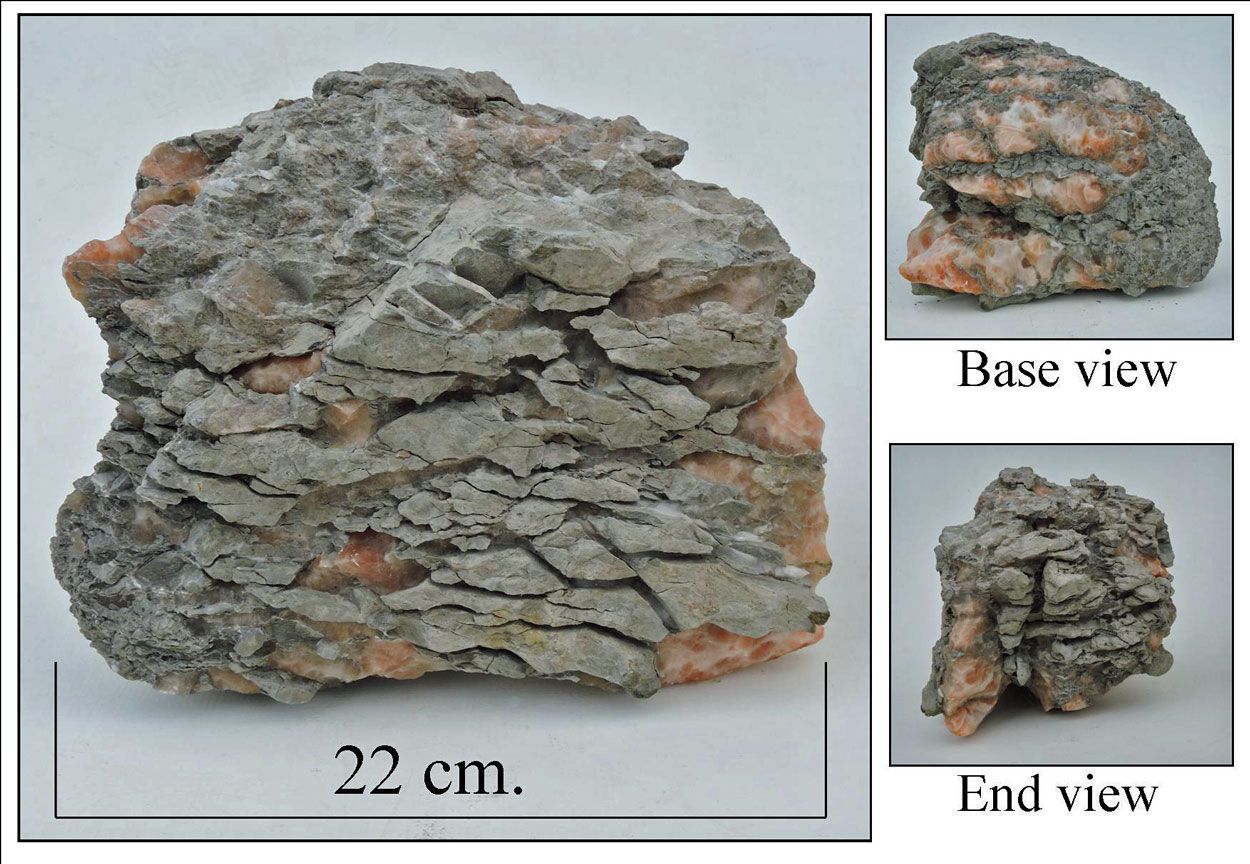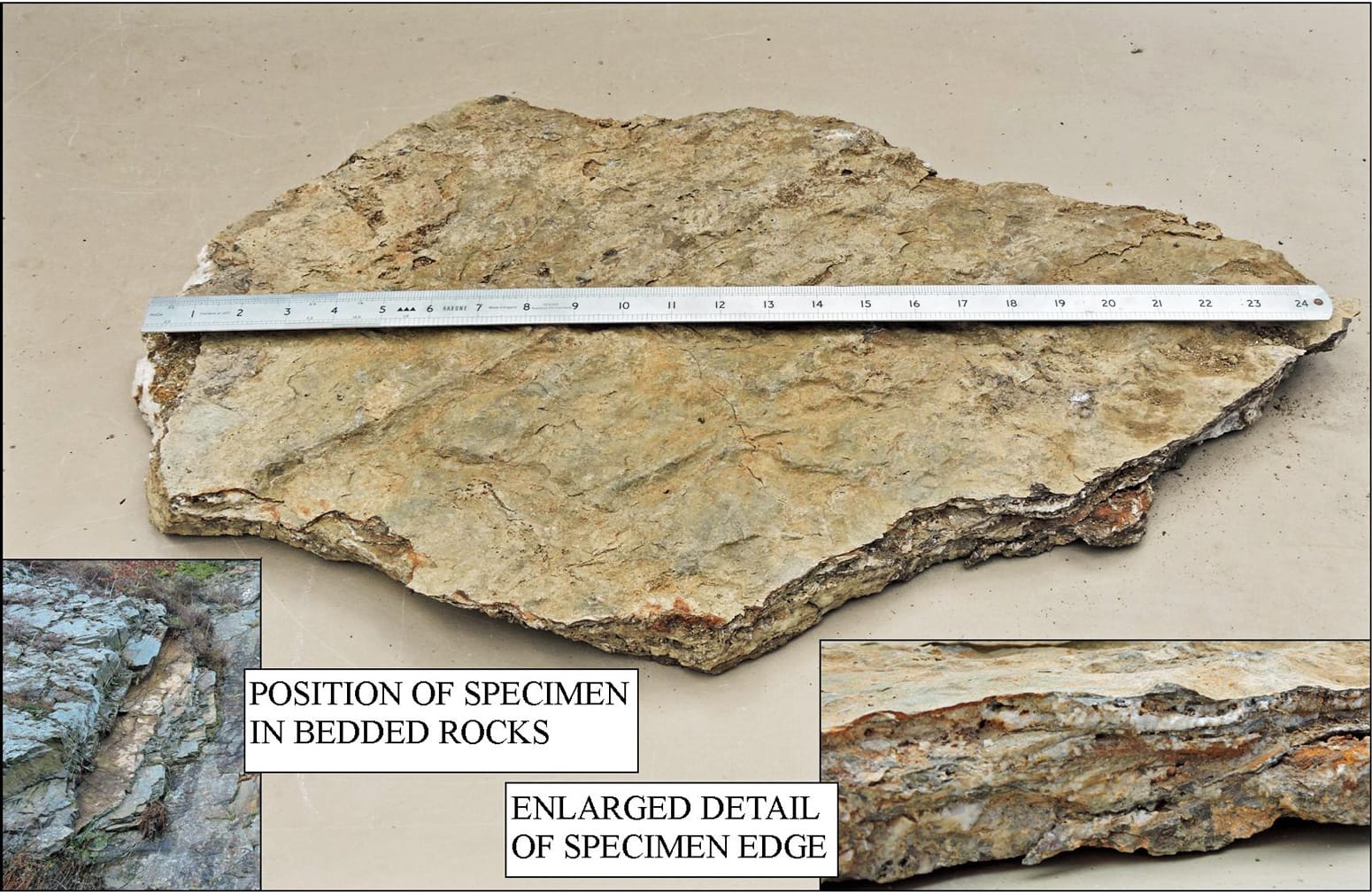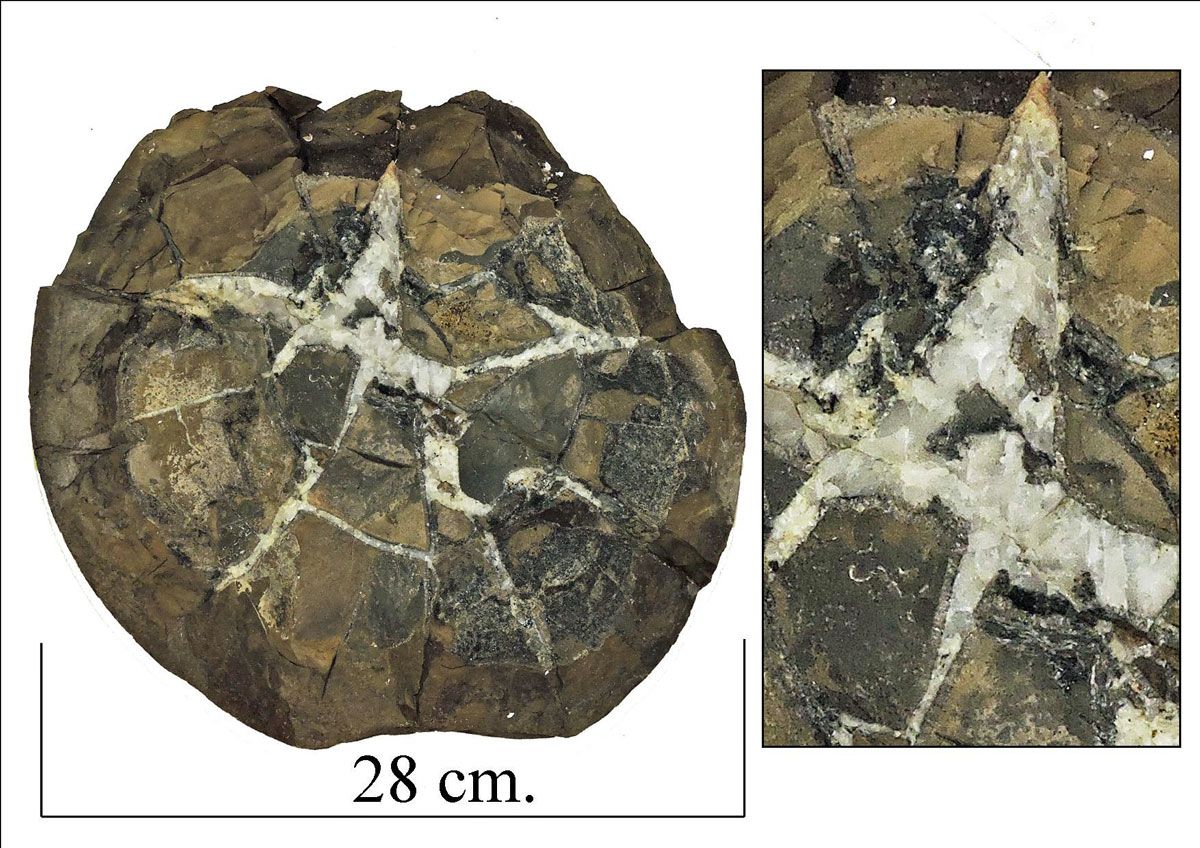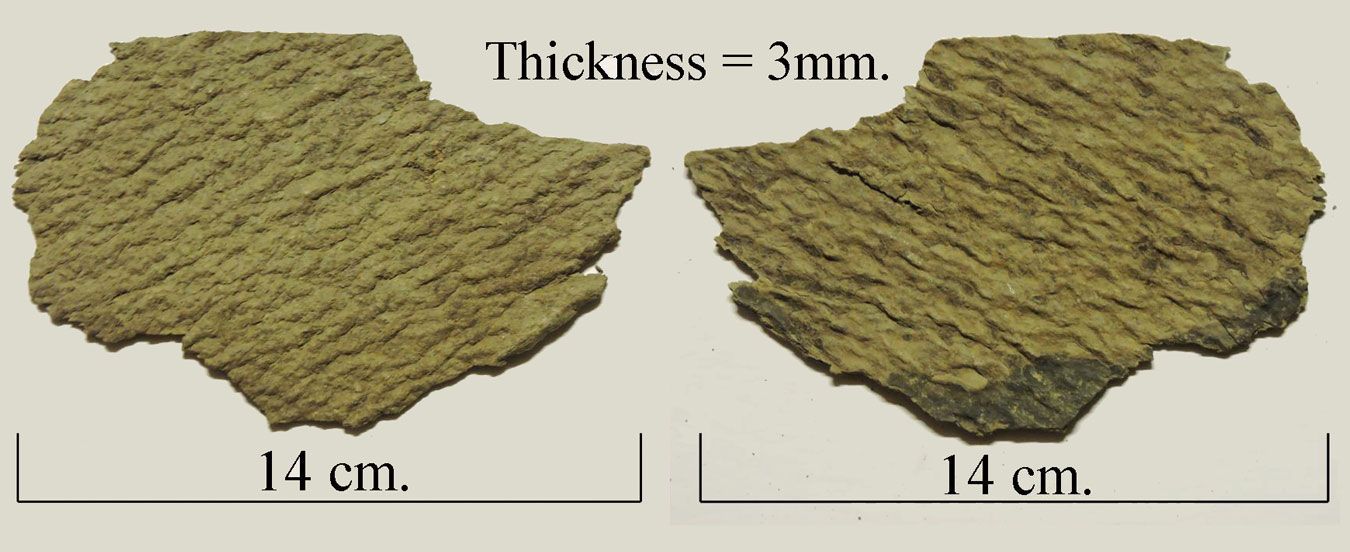
Triassic mudstone. Blue Anchor bay.
The specimen was collected from debris on the beach at Blue Anchor bay on the Somerset coast. The occasion was a field trip organised by the club in June 2014. The mudstones here are rich in nodules of pink alabaster ( fine grained gypsum ) hydrous calcium sulphate, a secondary product of the original Triassic evaporites which were deposited in the first instance as halites from drying up salty playa lakes. The beach was littered with quite a number of large boulders, some as large as 2 metres that were detached from the cliff by erosion, and with the same characteristics as the specimen.



